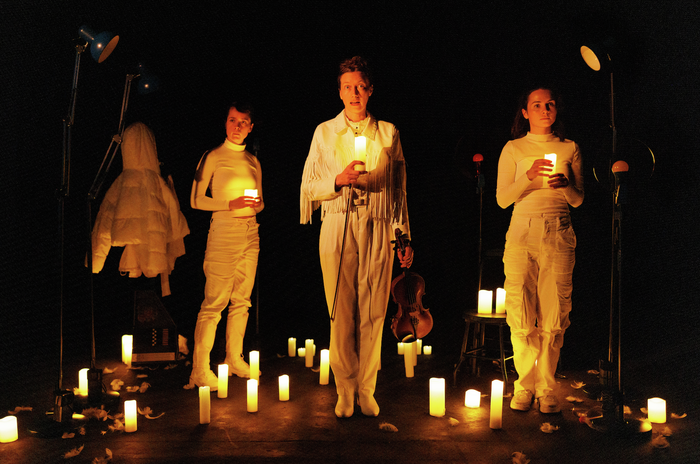The radical politics of Halloween
Halloween’s monsters capture revolutionary ideas, argues Max La Bouchardiere

Last term, I opened my first politics exam to a question asking what was ‘living and dead’ in The Communist Manifesto. In hindsight, and with reference to a twentieth century Italian work on an even older German philosopher, this was about the relevance of ideas in the pamphlet. Yet, my fascination with the gothic genre during my Literature A-Level led me to interpret the question as though I were an Engling. When my first year HisPoler’s grasp on economics quickly faltered, I ‘conjured up’ from my brain’s ‘nether world’ as many Marxist metaphors involving life and death as I could. I soon realised “zombies”, ghosts, vampires, and even werewolves haunted Karl’s canon like an eerie phantom. This October, then, let Marx and me remind you that Halloween and the monsters it evokes can help our understanding of politics.
“I soon realised “zombies”, ghosts, vampires, and even werewolves haunted Karl’s canon like an eerie phantom”
Marx’s horror motifs read akin to the works of Stoker or Shelley, or something to be told around a campfire this month. ‘Spectres’ and 'haunting(s)' jump at you immediately in the Manifesto — yet I found these monsters that children routinely dress as quite central to a Marxist understanding of politics and economics. Once I foregrounded his horror metaphors in my exam, I could better discuss tricky concepts. These archetypes of the spooky season in Marx’s writing weren’t polemical excuses for a rallying-call in 1848, or a literary embellishment because the older Marx was later library-bound; they appeared methods of teaching. By recalling several of his ghoulish descriptors, I was more powerfully explaining my argument in the same way that Marx was — such as when he likened ‘dead labour’ to a ‘vampire’ in Capital.
The vampire is critical through its powerful shorthand imagery for capital’s voracious “blood-sucking”. Using ‘vampire’, the exploitation of profit in return for a barely-survivable wage can easily be understood. Unearth Marx’s vampire imagery more and you can flex some of Karl’s fundamentals to your friends at your Halloween formal. In short, if benefitting from our labour is tied to our humanity, then exchanging the surplus separates us from our nature. We’re alienated, “zombified”, or one of Dracula’s victims — inversely alive on the condition he keeps taking and accumulating blood. Hence, we should see Halloween’s vampires as frightful mirrors for a terrifying political reality.
Zombies are another staple of Halloween. However, little is known of its original politics. The zombie is generally traced to France’s colonial enslavement of Haiti (then Saint-Domingue). Rooted in Haitian folklore and Voudou religion, the zombie was not the popular monster we see on the eve of November today, but a national symbol for slavery. The Haitian zombie was a human resurrected by Voudou spiritualism only to then be forced into eternal servitude by a “bokor”. These represented the slave owners, who exploited this to prevent their slaves from committing suicide. As Amy Wilentz stated, becoming a zombie sentenced to an eternity of labour was the greatest fear for enslaved Haitians, who believed that a heaven in Africa otherwise awaited.
“Their stylized horror unmasks the violent economic and ideological norms we accept as ordinary”
Like Marx’s vampires, Haiti’s zombie wasn’t just a reaction to abhorrent conditions. The figure served as an explanatory and subversive mode, and so we can use Halloween to learn about colonialism. Painfully, Haiti’s zombie was appropriated during America’s occupation of 1915-1934. Western audiences became exposed to Haitian folklore, and began to refashion zombies into what the popular consciousness imagines every October: contagious, alienated figures. I’d consider the perfect parallel for Marx’s “zombified” proletariat; harrowing victims, yet also the impetus for the end of (bourgeois) times.
This Halloween-adjacent genre of gothic media propagated in the West under Thatcher and Reagan. But by the mid-late 2000s, when their neoliberal project wasn’t resulting in national or international security, and seemingly stumbled towards its grave, neoliberalism dragged out a scale of monstrous content previously unforeseen. Between television, movies and games, the zombie archetype was even used to characterise dormant profits: ‘zombie economies’ and ‘zombie banks’ were in popular discourse after 2008. Now, Halloween’s monsters function as provocative devices for expressing the likes of economic crises, cultural anxieties, and discontent. Their stylized horror unmasks the violent economic and ideological norms we accept as ordinary. Like Simon Pegg’s walks to the shop for a Cornetto in Shaun of the Dead, the second time unaware his tedious routine had coincided with a zombie apocalypse, monsters provide a vocabulary for depicting the legitimised, alienating ways of late capitalism.
In the spirit of the spooky season then, we should see our use of monsters as radical pointers that can unravel political and economic apparatuses. Their act of communicating and satirising certain faults in political systems proves especially important in our return to the zombie economy. This Halloween, dress as a horde of zombies with your friends and reject neoliberal individualism. Or maybe, don pointy teeth and parody predatory economics.
 News / SU reluctantly registers controversial women’s soc18 December 2025
News / SU reluctantly registers controversial women’s soc18 December 2025 News / CUP announces funding scheme for under-represented academics19 December 2025
News / CUP announces funding scheme for under-represented academics19 December 2025 Features / Should I stay or should I go? Cambridge students and alumni reflect on how their memories stay with them15 December 2025
Features / Should I stay or should I go? Cambridge students and alumni reflect on how their memories stay with them15 December 2025 Fashion / The art of the formal outfit 18 December 2025
Fashion / The art of the formal outfit 18 December 2025 News / Dons warn PM about Vet School closure16 December 2025
News / Dons warn PM about Vet School closure16 December 2025










